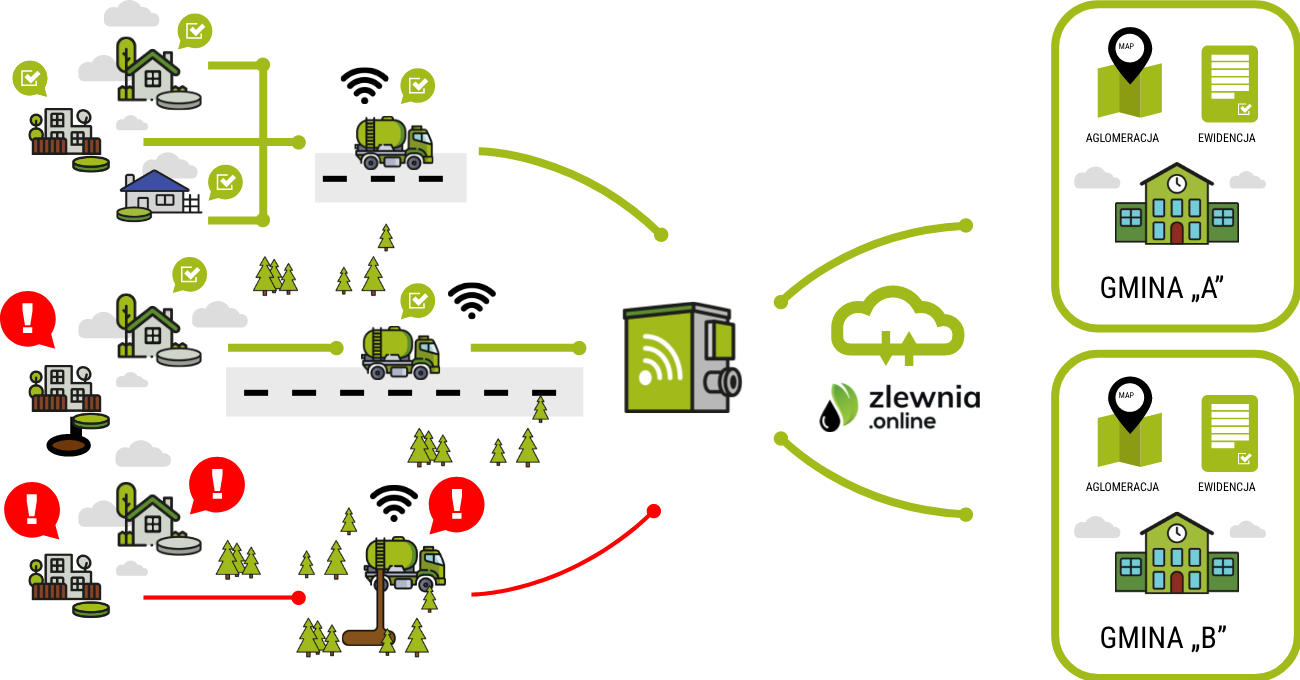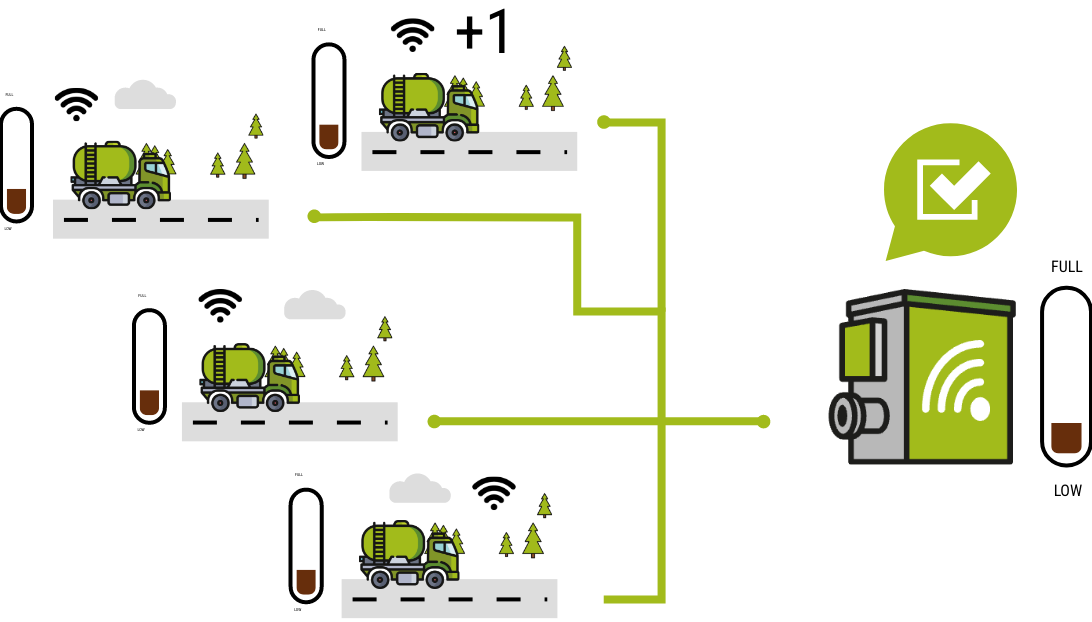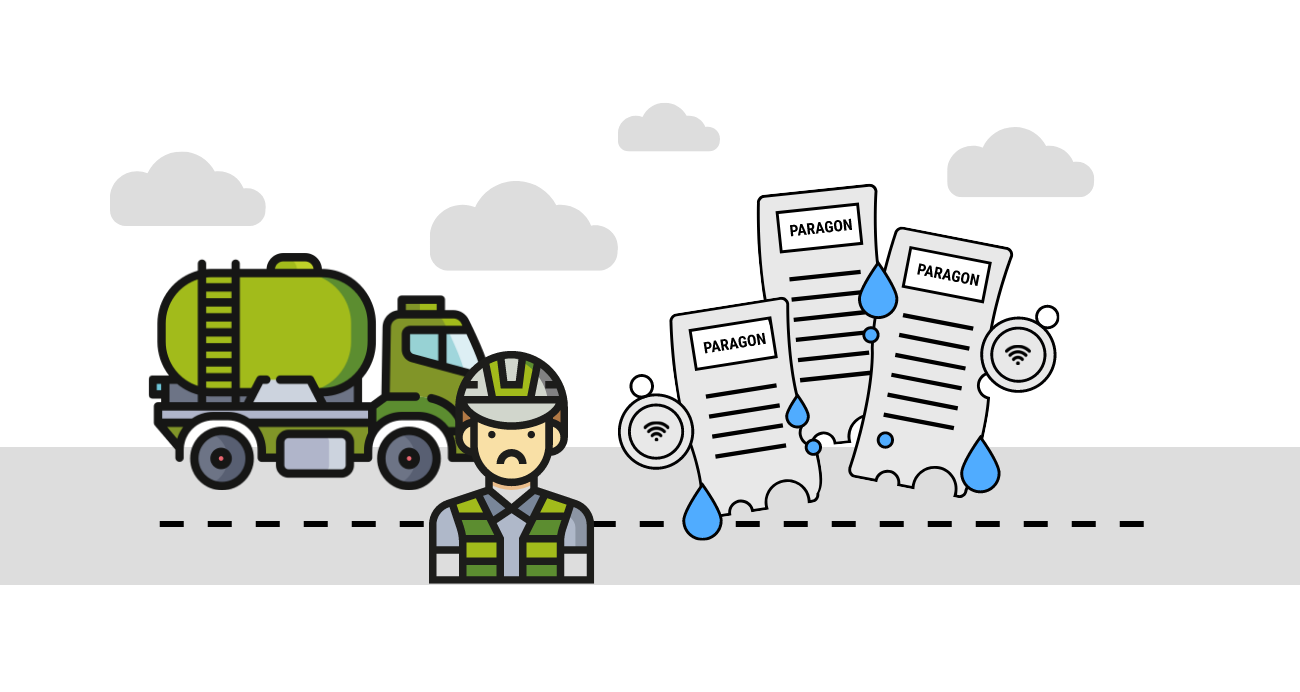What benefits does the implementation of the wastewater.cloud system?
The situation before the implementation of the Wastewater.cloud system
Benefits of implementing the Wastewater.cloud system
Control


Increase


Reduce

Currently, the levels of COD loads in transported wastewater are significantly higher than the norms for domestic wastewater flowing into wastewater treatment plants through the sewerage network.
The reasons for this situation include:
- lack of supervision over wastewater tank owners who do not empty their tanks and dispose of wastewater regularly.
- lack of control over a wastewater tanker drivers, some of which illegally discharge a portion of the transported wastewater into the environment

Organize

Employees of the wastewater treatment plants responsible for contact with tanker companies accept documents in paper form, sign contracts, and grant access to drivers by issuing proximity cards. Periodic data on wastewater discharges are retrieved locally from the control cabinet memory.
Currently, a wastewater tanker drivers must use multiple “traditional” solutions: handwritten lists of pickups, paper confirmations and invoices issued to customers, multiple proximity cards and key fobs for authorization at various receiving stations, damaged, faded, and weather-resistant printouts from receipt printers at the wastewater discharge point station.

The wastewater.cloud system is a browser-based software that enables wastewater treatment plants employees to upload contracts to their account, grant access to the wastewater discharge point station, block access, and retrieve data from the stations at any time.
With the application provided with the wastewater.cloud system, drivers can:
- input or read the list of pickups
- confirm pickups at the customer’s location
- navigate the truck’s route
- authenticate at the wastewater discharge point station
- issue an invoice or receipt confirmation
- verify the correct water-wastewater agglomeration
Control

Increase

The declarative data provided by wastewater tanker drivers are entered only at the moment when the truck appears at the wastewater discharge point station. A common practice is to enter only one property address from which wastewater was collected - to quickly open the valve of the discharge station. There is also no way to verify whether all the collected wastewater has been delivered to the wastewater treatment plants.
Reduce

Currently, the levels of COD loads in transported wastewater are significantly higher than the norms for domestic wastewater flowing into wastewater treatment plants through the sewerage network. The reasons for this situation include:
- lack of supervision over wastewater tank owners who do not empty their tanks and dispose of wastewater regularly.
- lack of control over a wastewater tanker drivers, some of which illegally discharge a portion of the transported wastewater into the environment
Organize

Employees of the wastewater treatment plants responsible for contact with tanker companies accept documents in paper form, sign contracts, and grant access to drivers by issuing proximity cards. Periodic data on wastewater discharges are retrieved locally from the control cabinet memory.
Currently, a wastewater tanker drivers must use multiple "traditional" solutions: handwritten lists of pickups, paper confirmations and invoices issued to customers, multiple proximity cards and key fobs for authorization at various receiving stations, damaged, faded, and weather-resistant printouts from receipt printers at the wastewater discharge point station.
Control

Increase

Reduce

Organize

The wastewater.cloud system is a browser-based software that enables wastewater treatment plants employees to upload contracts to their account, grant access to the wastewater discharge point station, block access, and retrieve data from the stations at any time.
With the application provided with the wastewater.cloud system, drivers can:
- input or read the list of pickups
- confirm pickups at the customer's location
- navigate the truck's route
- authenticate at the wastewater discharge point station
- issue an invoice or receipt confirmation
- verify the correct water-wastewater agglomeration